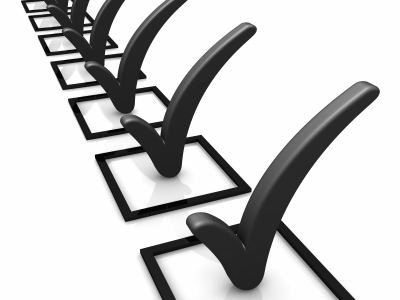
Initial Check
It’s good to bring in a project checklist halfway through your project, but it’s even better to start checking right from the beginning. Establishing good practices early makes it so much easier for everyone involved to form good habits. This will pay off later when the pressure is on and people haven’t got time to learn new processes midstream or correct costly errors.
Create a Checklist
You can use a predefined project checklist, but will usually find you’ll have to create your own or at least modify an existing one to suit your method. However, these are the sorts of basic things all projects should have in place:
- Project Work Plans
- Risk Management Process
- Issue Management Process
- Configuration Management or Filing Process
- Quality Management Process (quality assurance and review)
- Project Team Structure
- Change Control Process
- Cost/Benefits Case or Business Case (high level cost estimates initially)
- Control Procedures (progress meetings, reports, etc)
All of these items need to be agreed and approved.
Check on an Existing Project
Such a checklist can also be used if you are taking over the management of an existing project. It’s good to identify any gaps and highlight them, along with the cost/benefits to get the support from the sponsors to make any necessary changes. It’s always much more difficult to put processes in place when everything’s in progress already.
Publish the Project Checklist
Always publish! In fact, associating some sort of graphical representation of the health of the project, such as a graph or thermometer for each item, showing how the project rates and how it is improving over time, will add a new and refreshingly open dimension to your project reporting.
